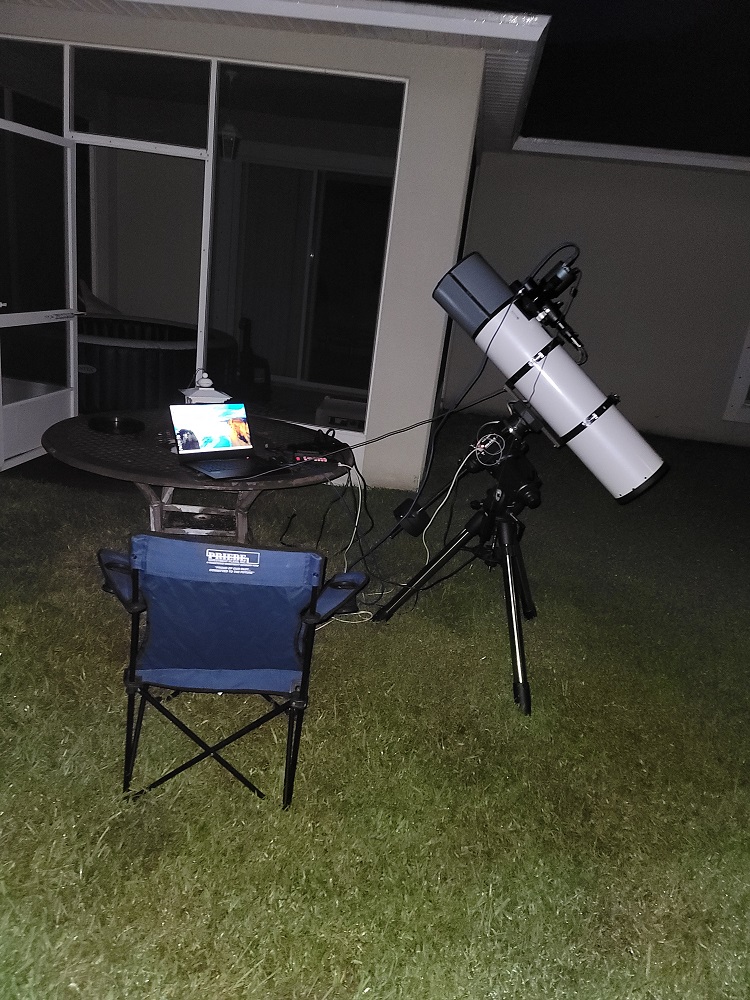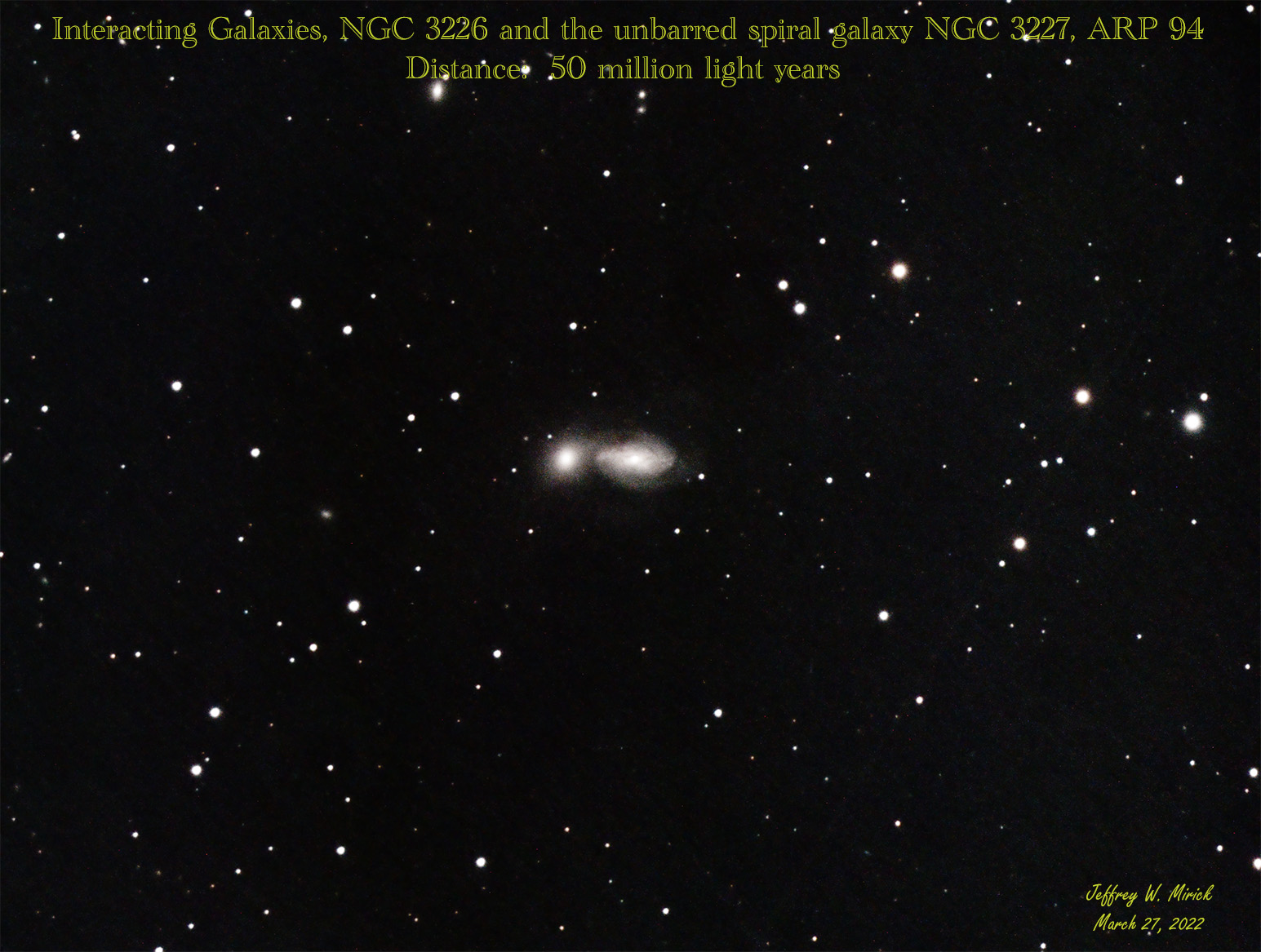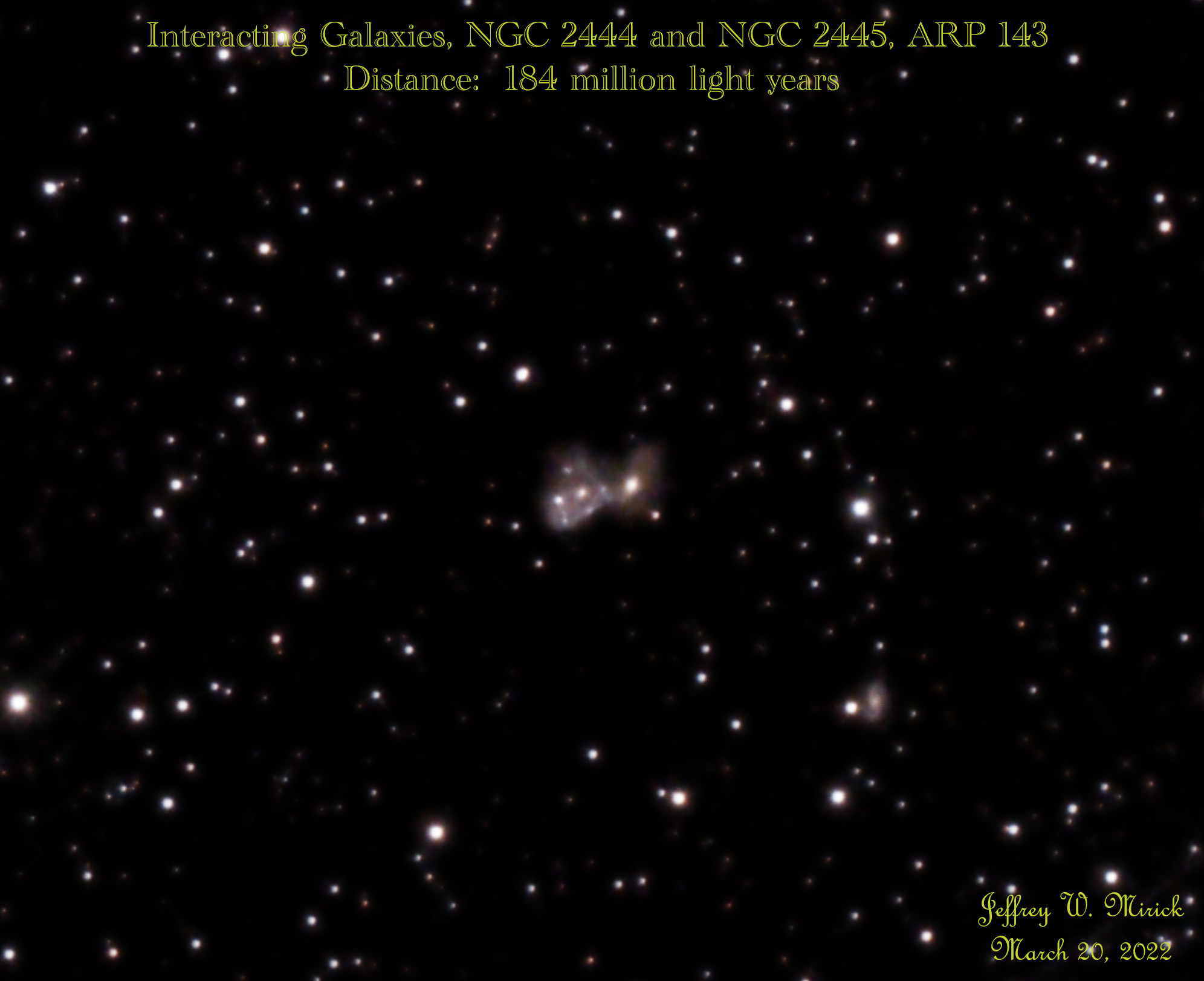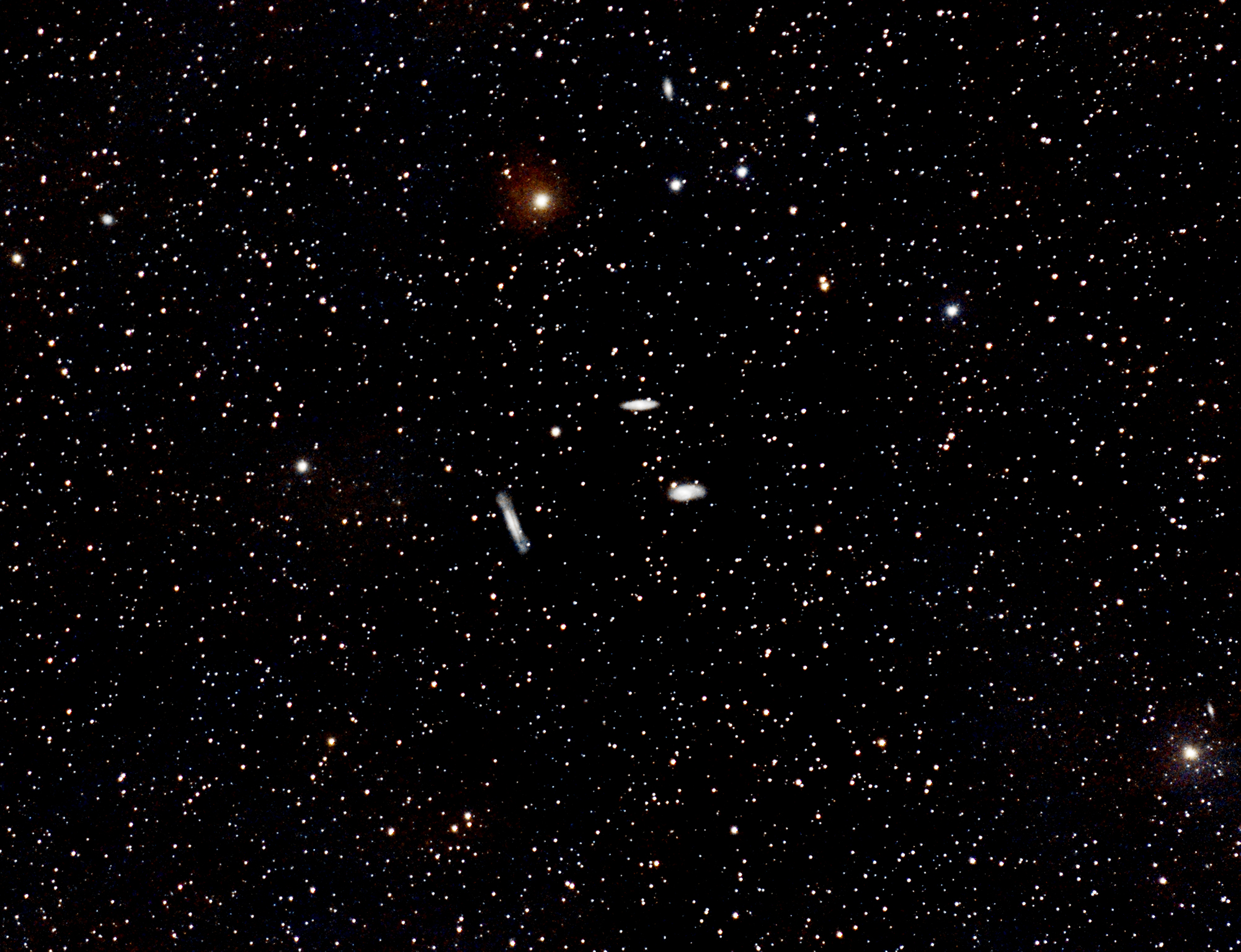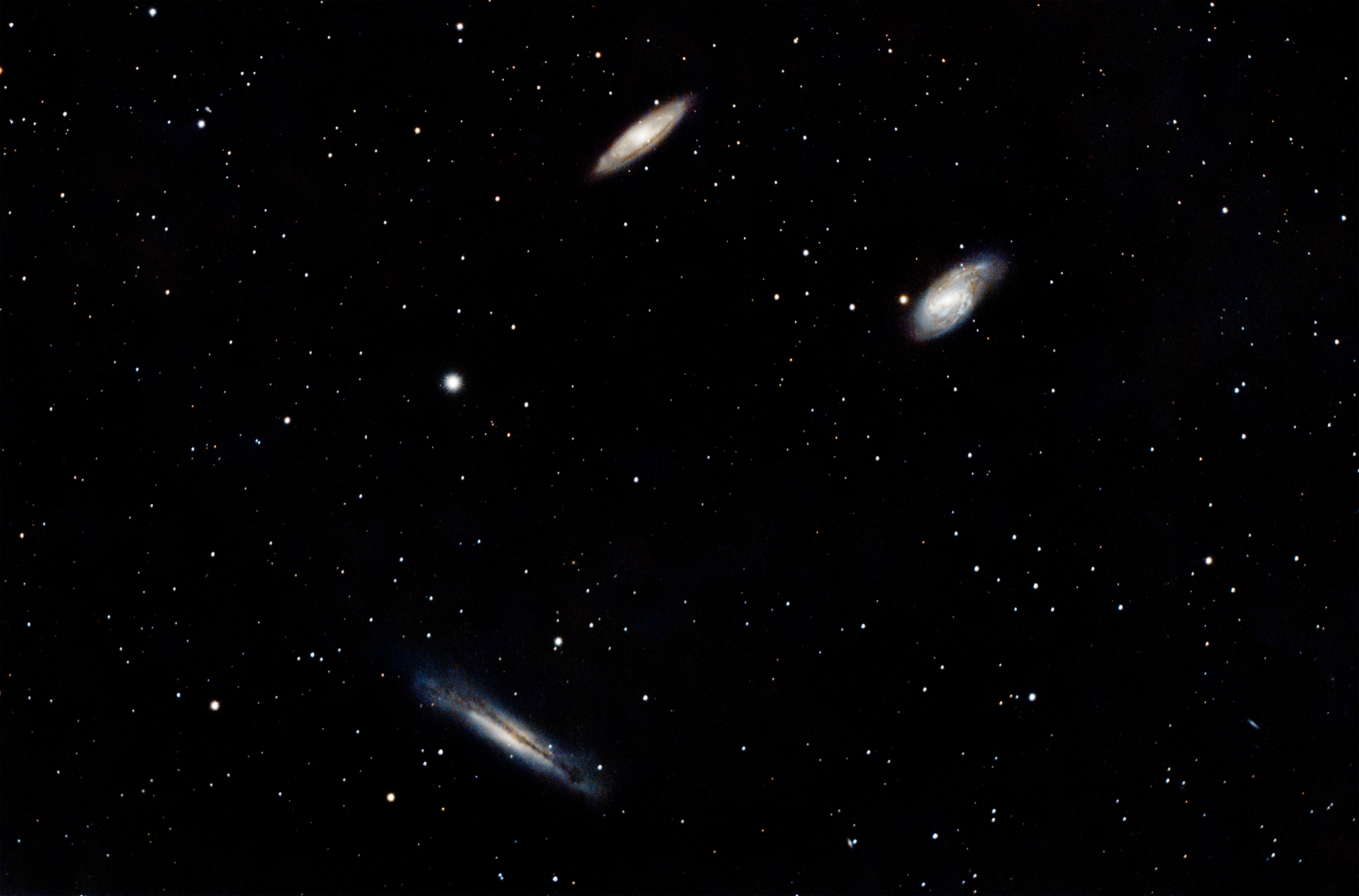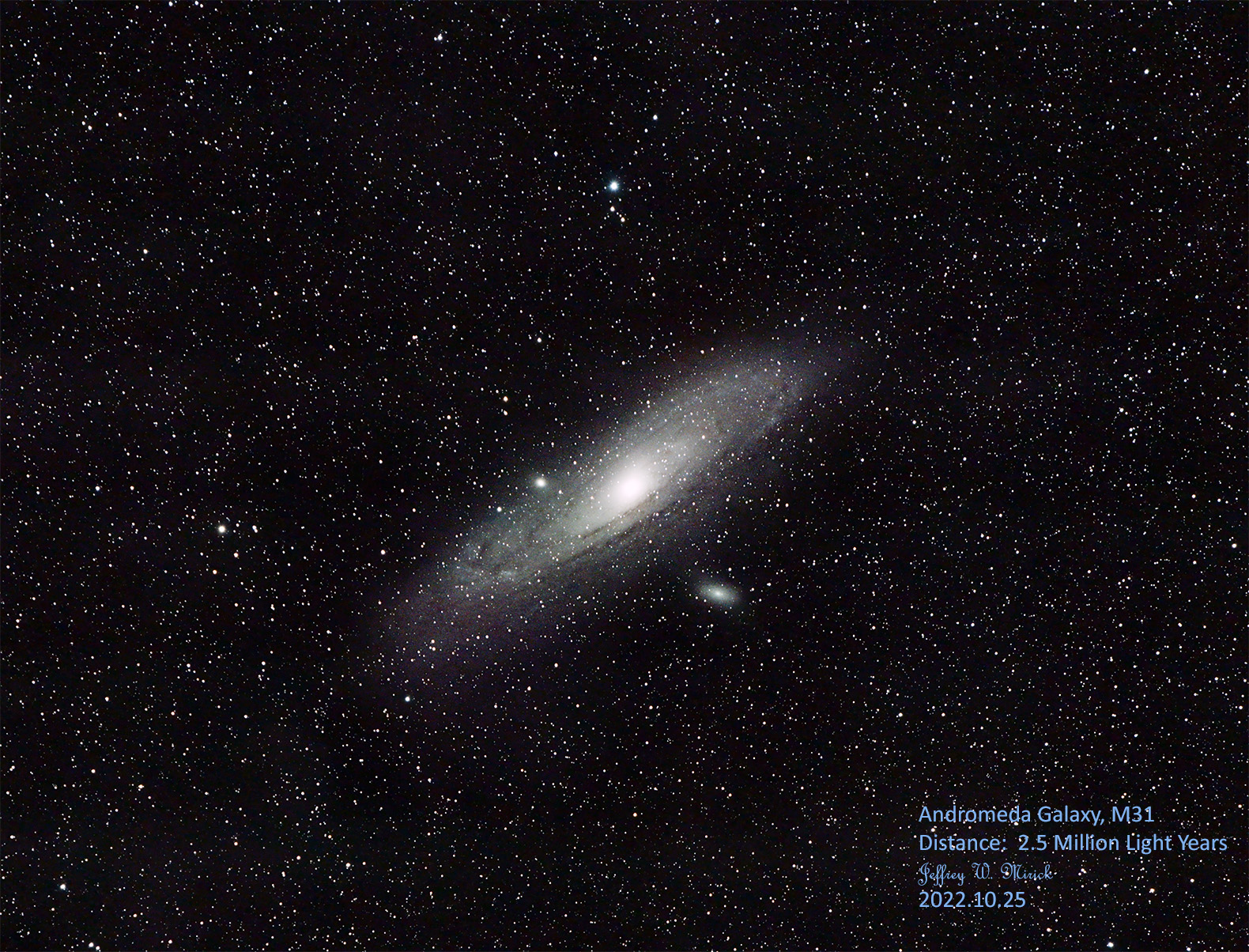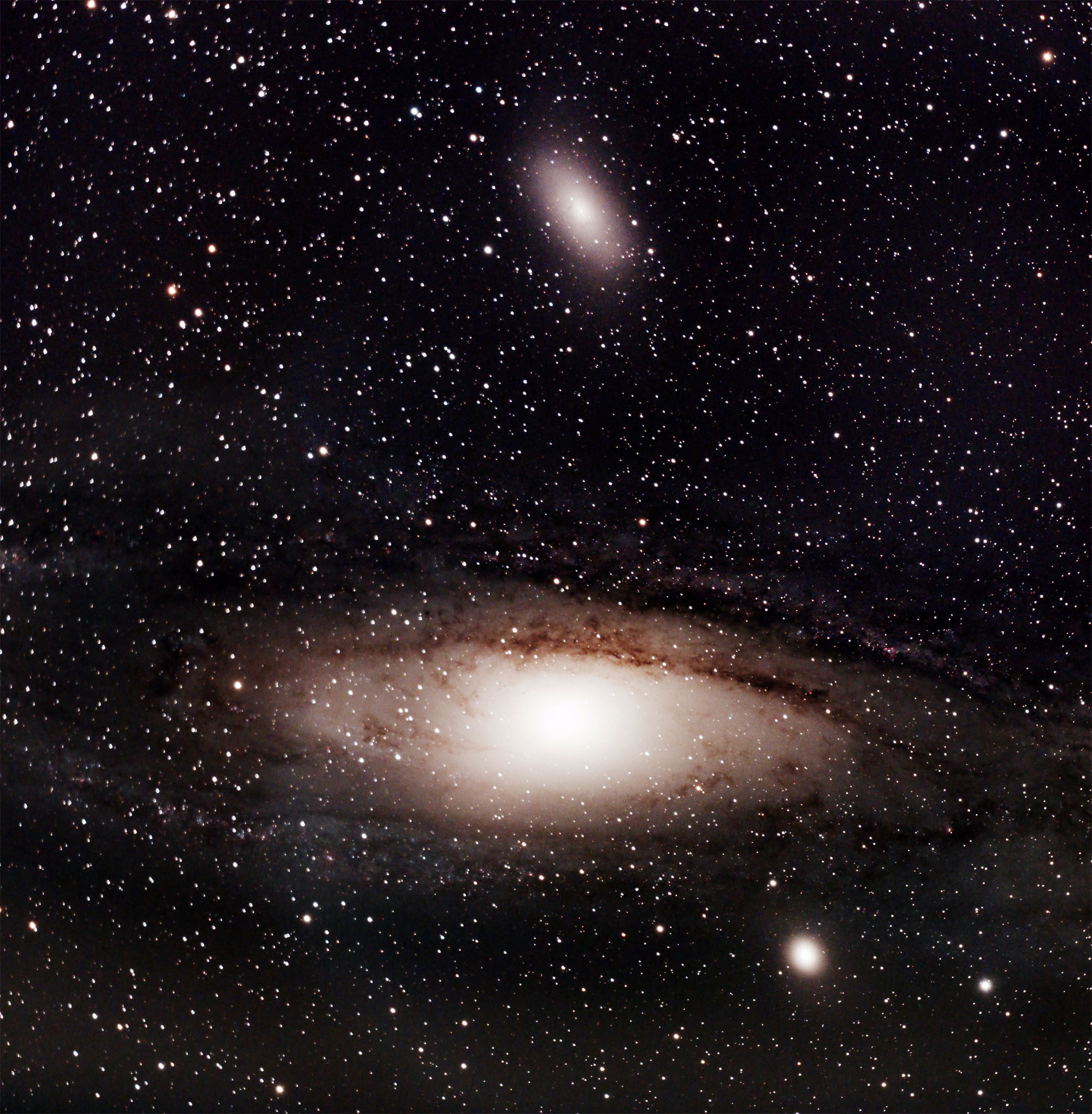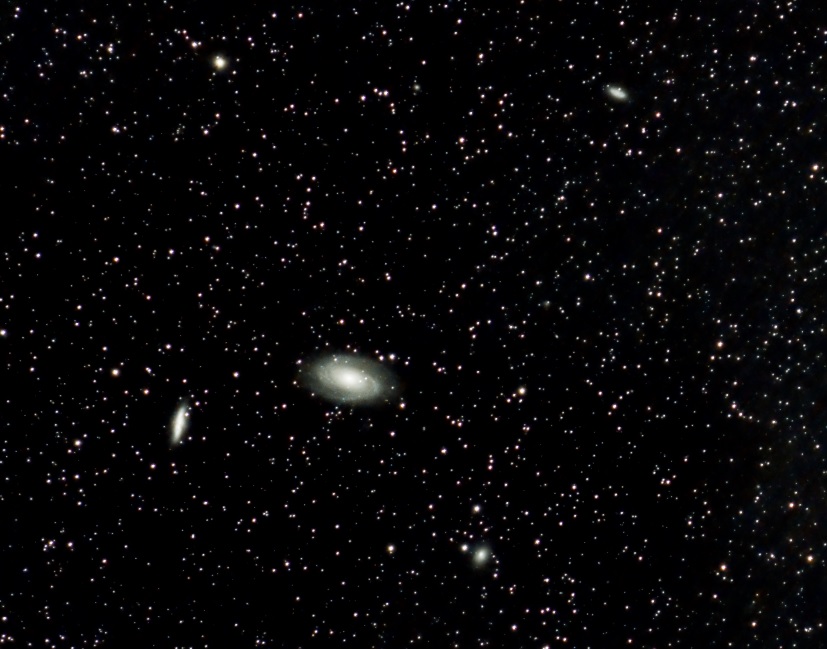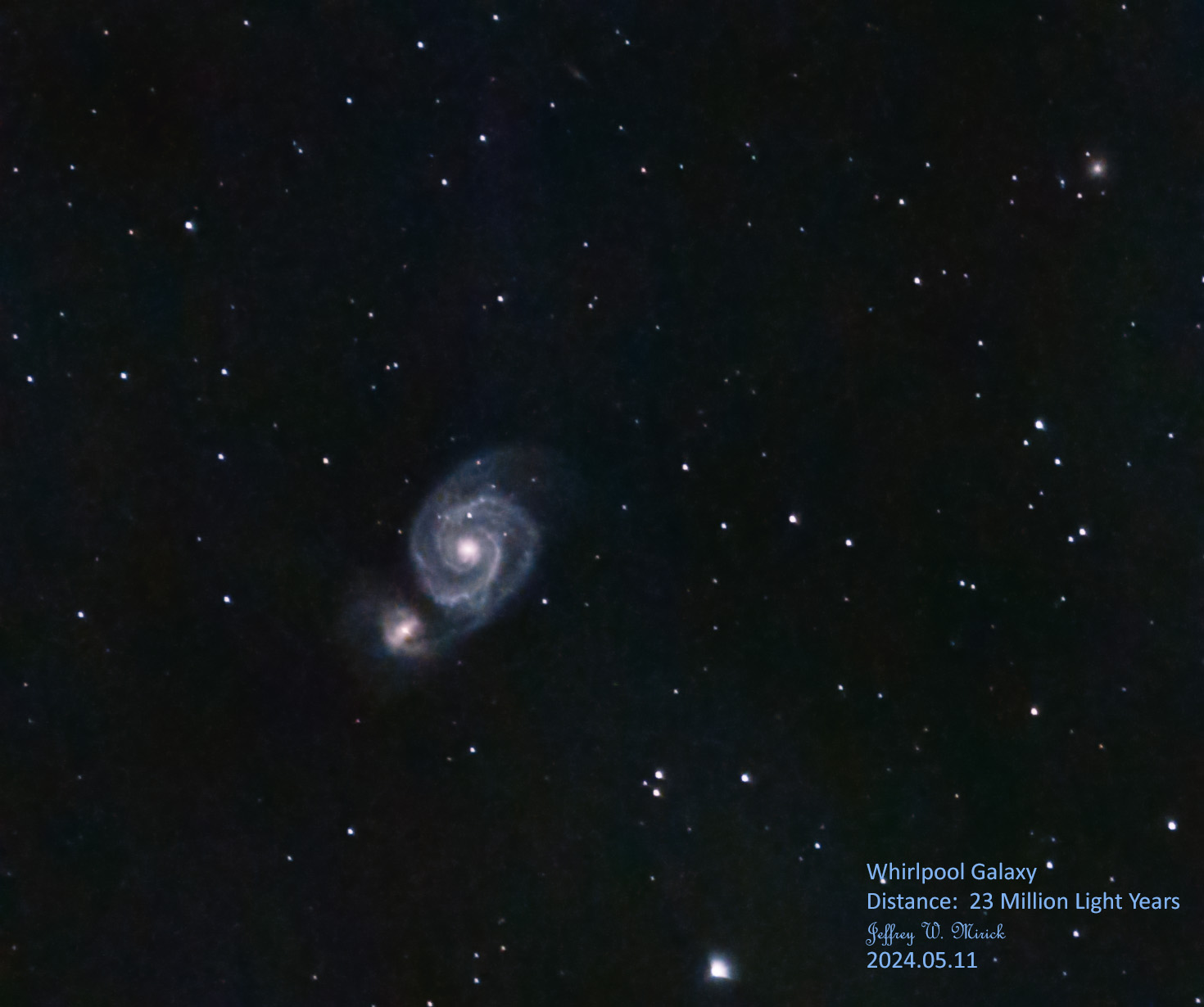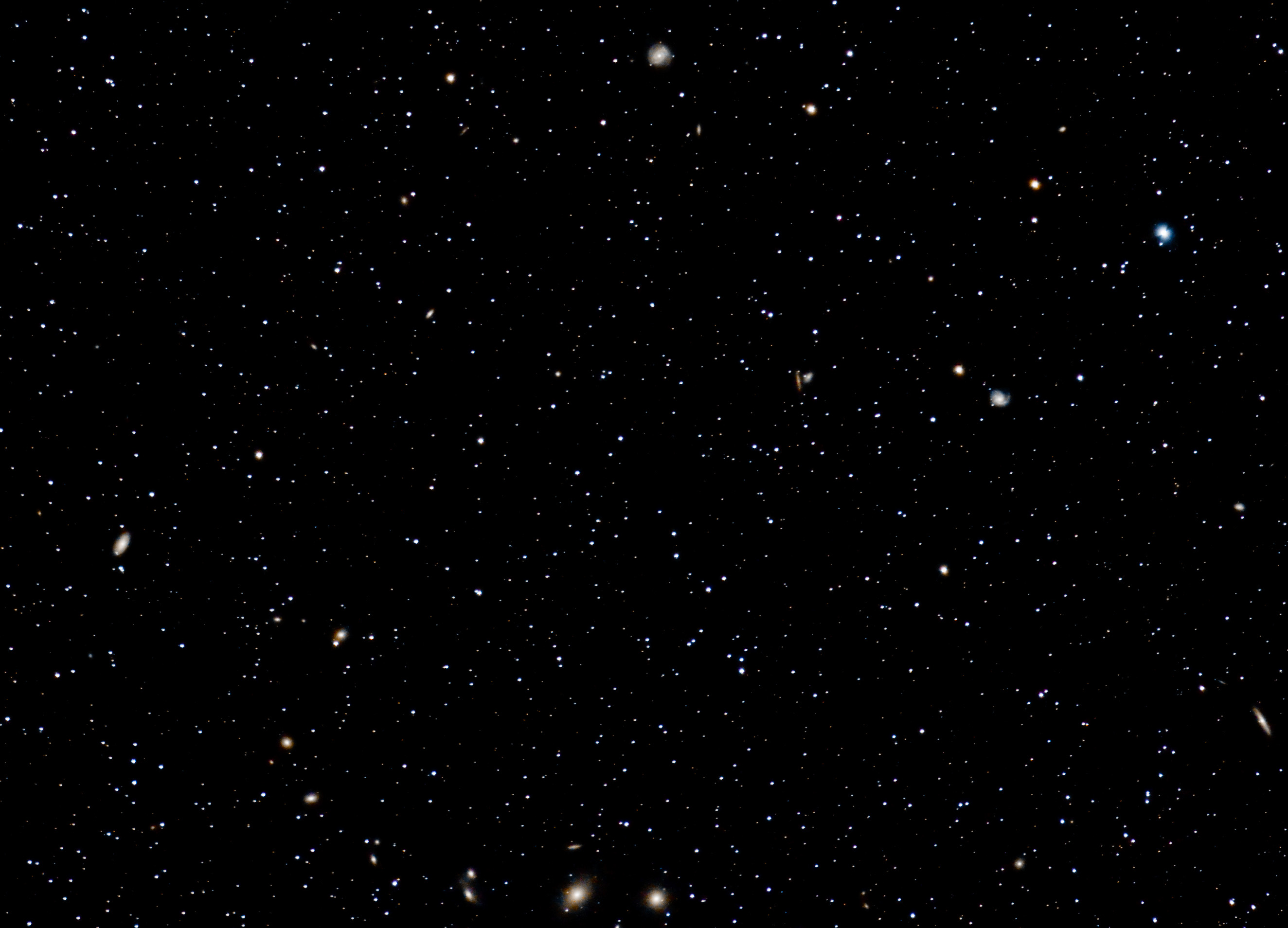Astro-images - This page is still being worked on
All photos by Jeffrey W. Mirick
Galaxies
This is a composite image of a lunar eclipse and the Andromeda galaxy.
Both were taken with a 200 mm focal length camera lens.
This image illustrates the relatively sizes between the two objects in the night sky.
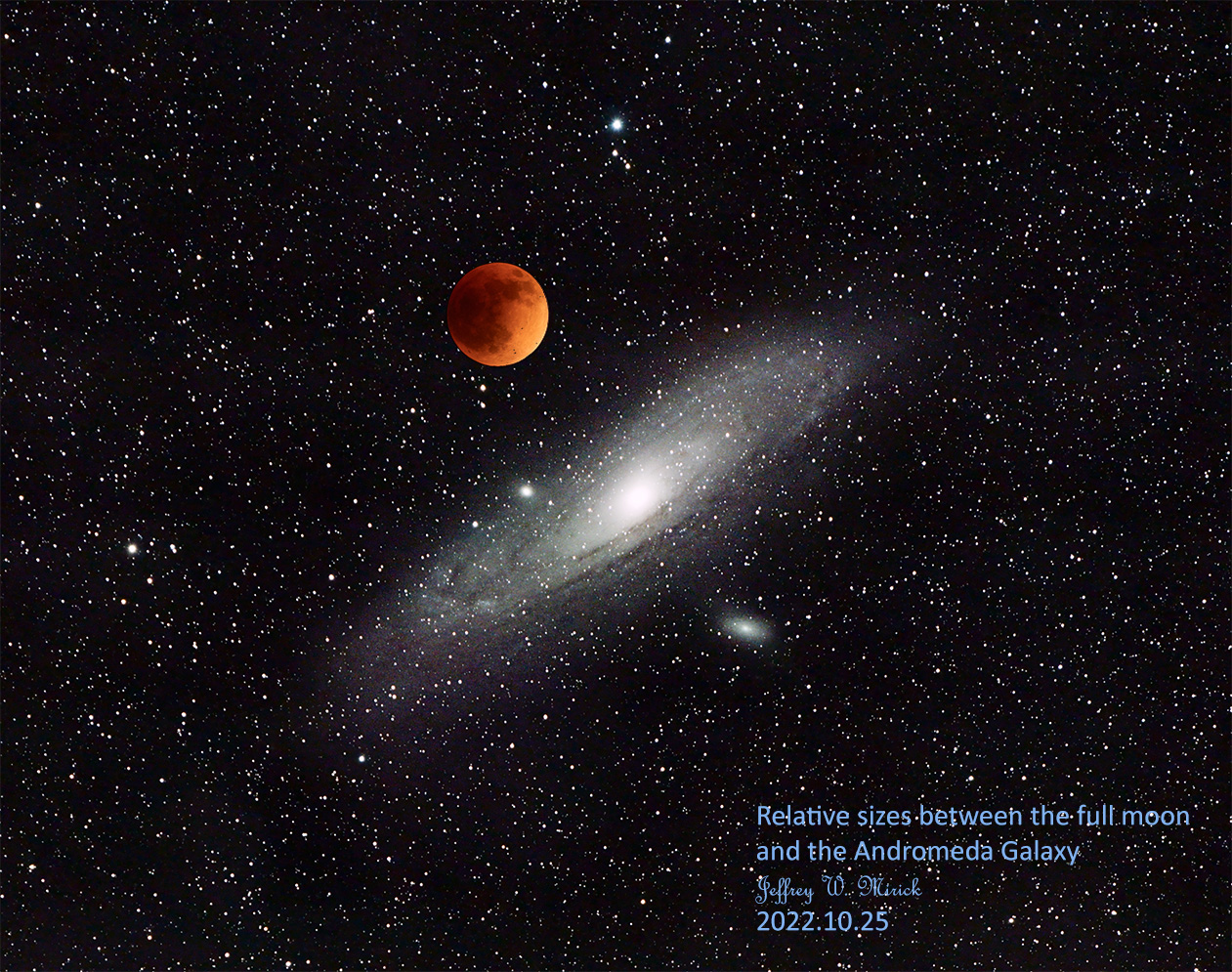
| Object | Abel 1656, Coma Cluster of galaxies |
|---|---|
| Date | April 17, 18 2025 |
| Constellation | Coma Berenices |
| Distance | The mean distance is about 321 million ly |
| Magnitude | 11.5+ |
| Comments | There are over 1,000 galaxies in this cluster |
| Exposure | 87 subs at 2 minutes - total exposure: 2 hours 54 minutes |
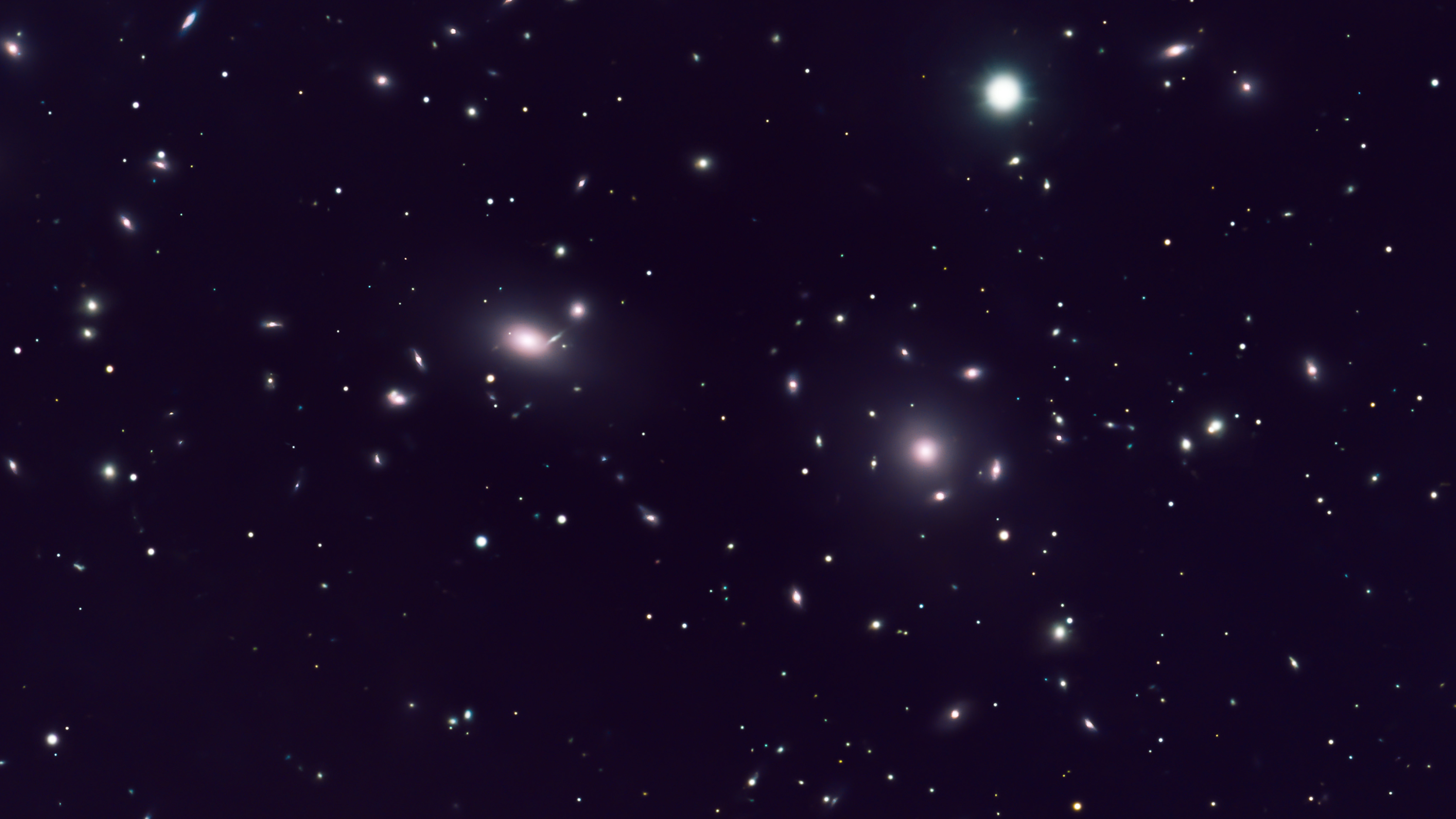
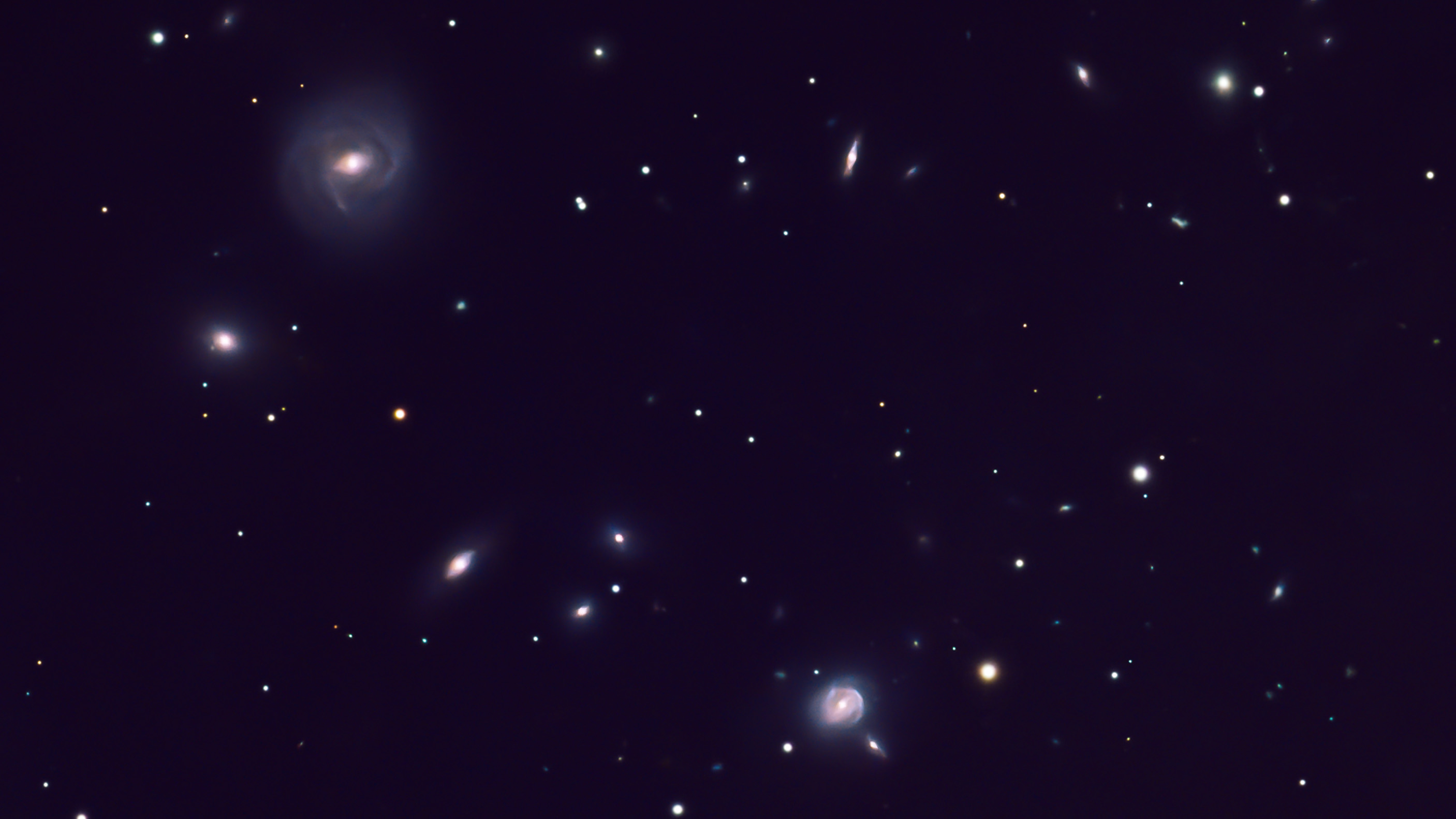
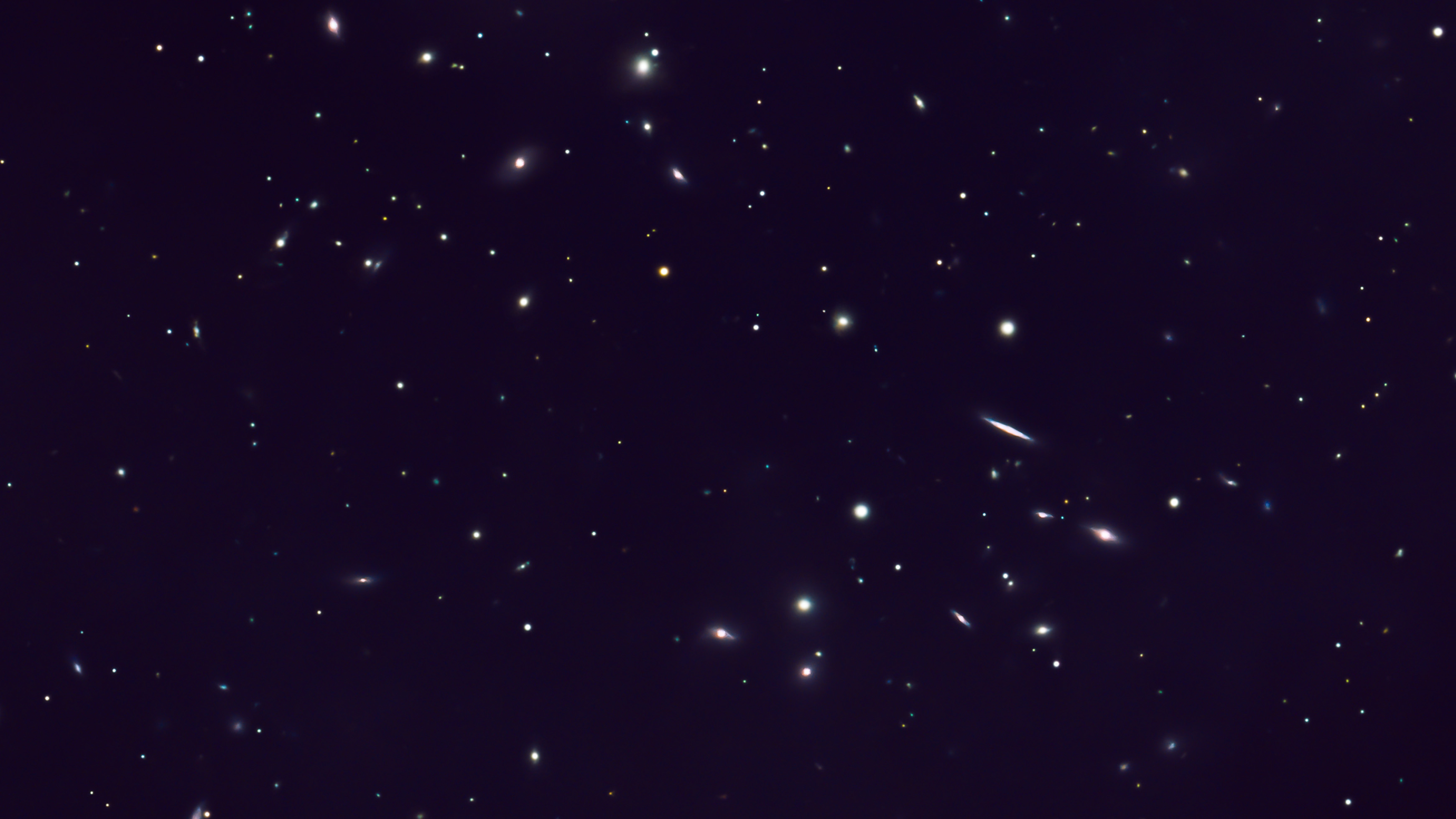
| Object | M51a, Whirlpool Galaxy |
|---|---|
| Date | |
| Constellation | Canes Venatici |
| Distance | 31 Million Light Years |
| Magnitude | 8.4 |
| Comments | A 600 mm focal length camera lens was used to capture this image. |
| Exposure | 51 subs at 20 seconds |
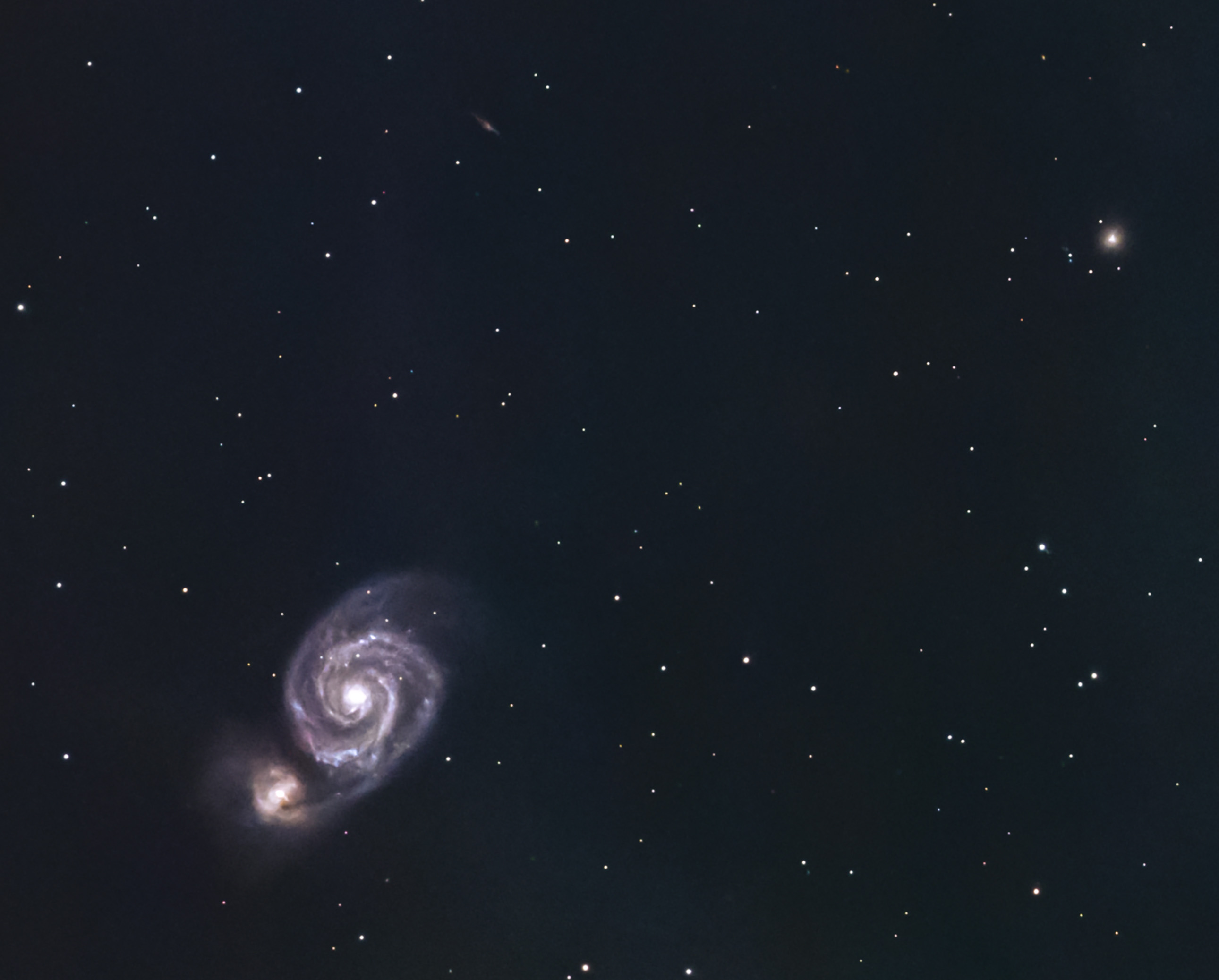
| Object | M65, M66, NGC 3628, Leo Triplet |
|---|---|
| Date | April 2021 |
| Constellation | Leo |
| Distance | 35 Million Light Years |
| Magnitude | 9.3, 8.9, 9.5 |
| Comments | Gain: 8000 |
| Exposure | 190 subs at 20 seconds |
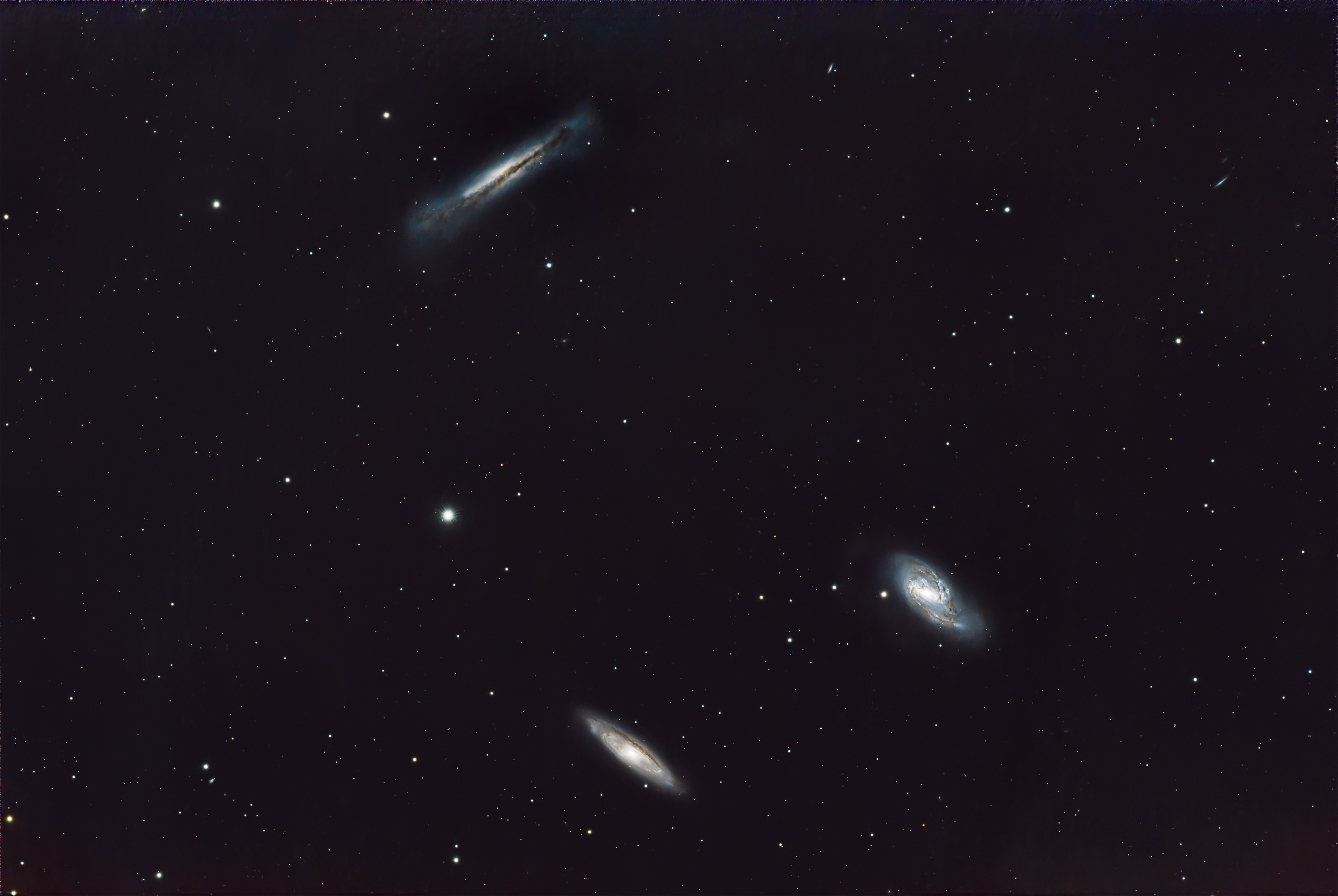
Quasars
| Object | 3c48, Quasar |
|---|---|
| Date | January 2023|
| Constellation | Triangulum |
| Distance | 3.9 billion light years |
| Magnitude | 16.5 |
| Comments | |
| Exposure | 11 subs at 5 minutes |
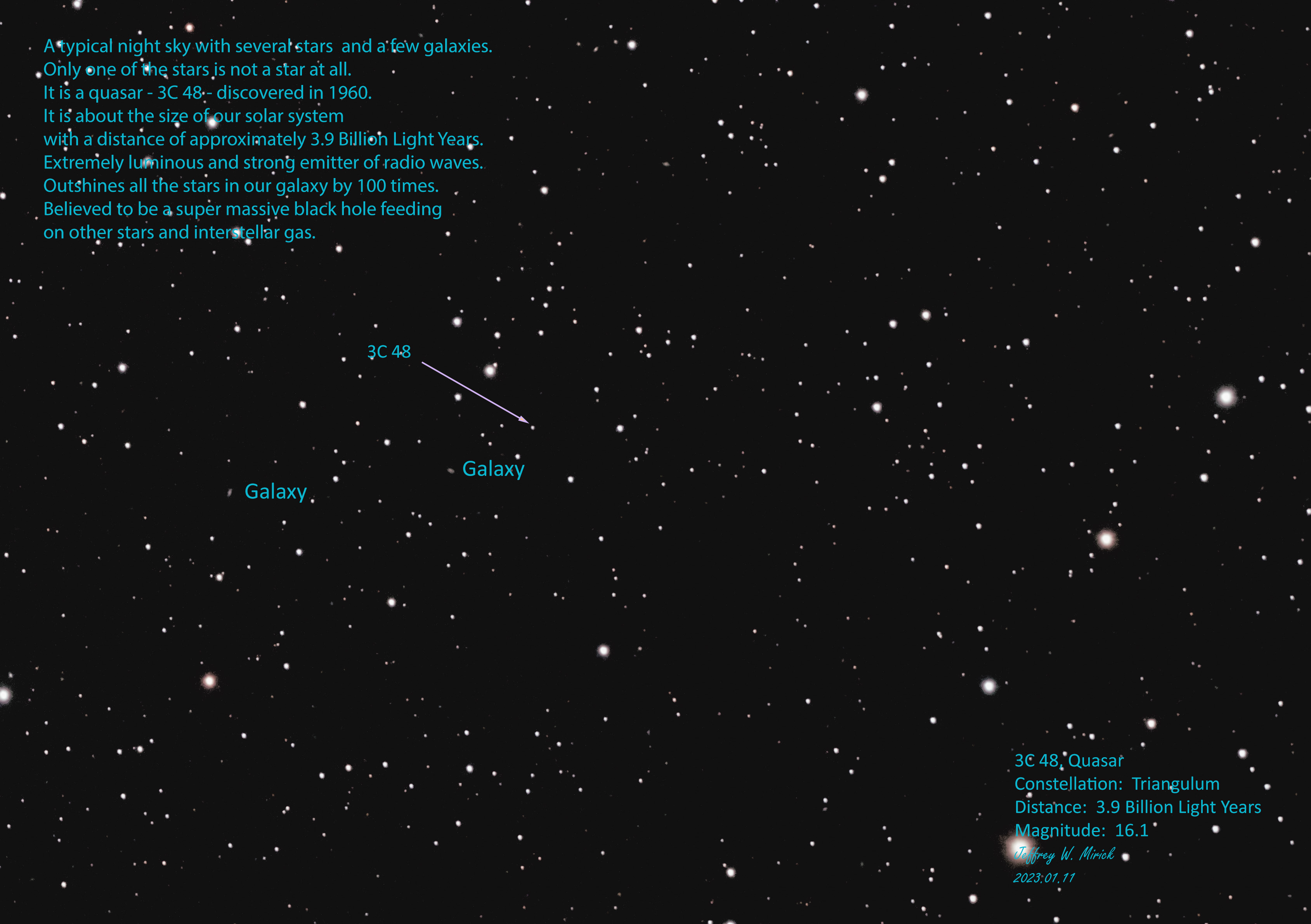
| Object | Twin Quasars, QSO 0957+561 A/B, gravitational lensing |
|---|---|
| Date | April 2025 |
| Constellation | Ursa Major |
| Distance | 8.8 Billion light years |
| Magnitude | 16.5 and 16.7 |
| Comments | Single quasar that appears as 2 due to gravitational lensing Discovered in 1979. 6 arcsecond separation |
| Exposure | 42 subs at 2 minutes, Total time: 1 hour, 24 minutes |
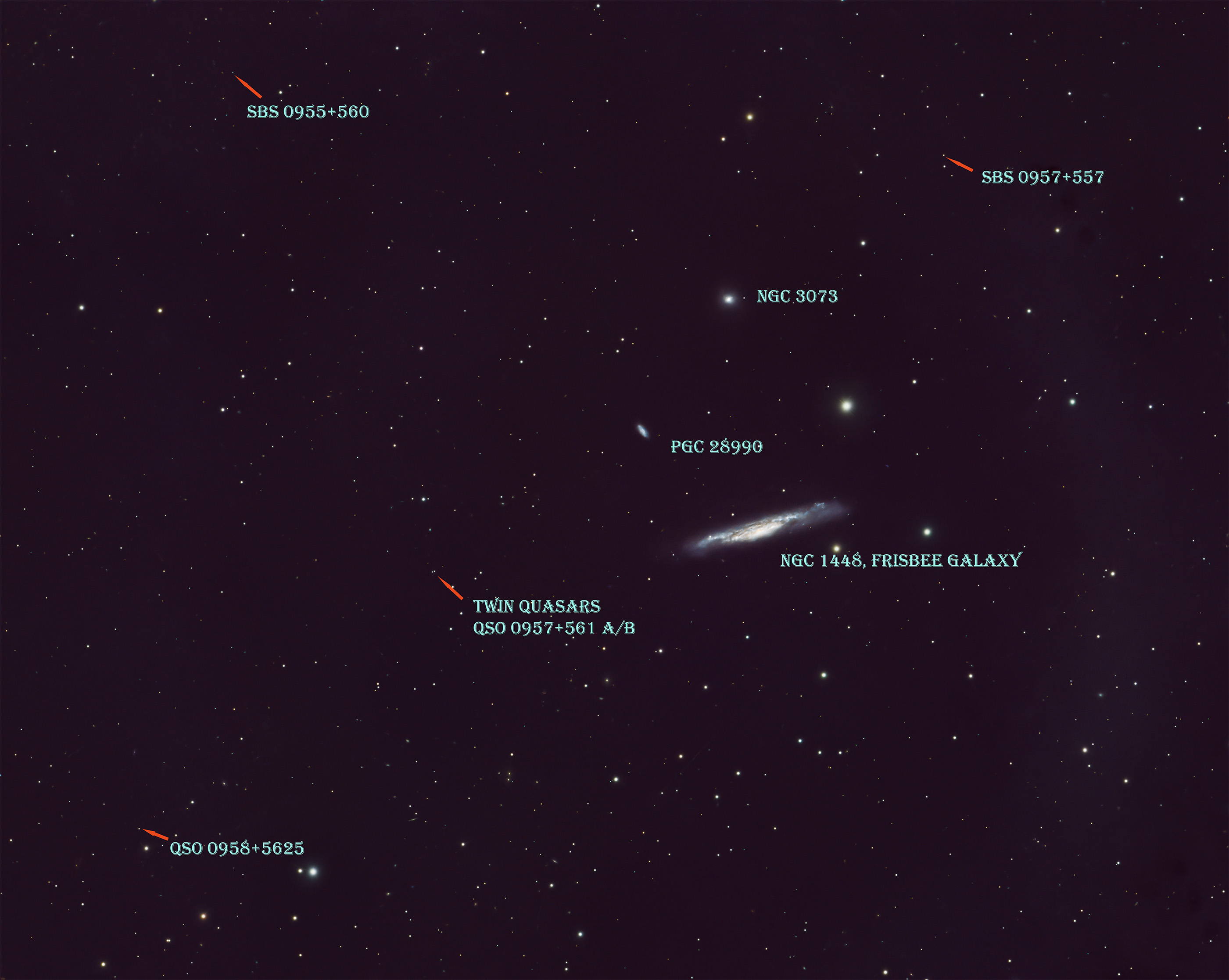
NGC 3226 and NGC 3227, Arp 94 |
NGC 2444 and NGC 2445, Arp 143 |
